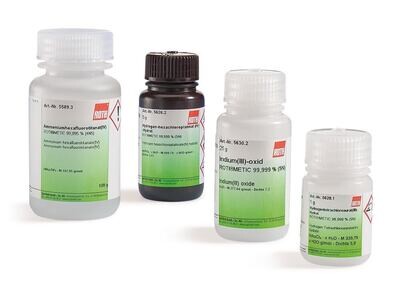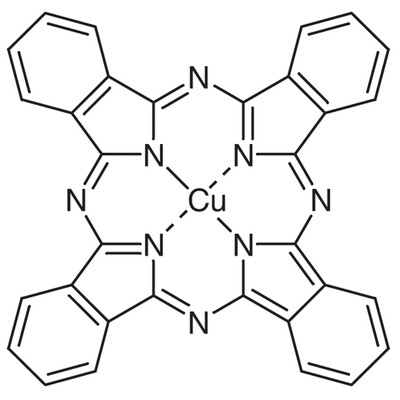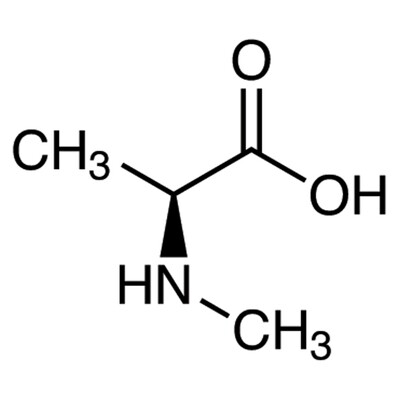Verzending 24–48 u • Levering in de hele EU • Veilige chemieverpakking
Tin(IV) oxide 99.999% 25 g
SKU 007524-2
€ 409,86
In stock
1
Save this product for later
Tin(IV) oxide 99.999% 25 g
Product Details
CAS number: 18282-10-5
Chemical formulas: SnO2/ F.W. 150.69
Cation: Sn
Packaging: 25 g
EAN: 8721028256003
Brand: Laboratoriumdiscounter
Tin(IV) oxide, also known as stannic oxide, is a unique compound widely used in various industries. With its exceptional properties, including high refractive index, electrical conductivity, and catalytic activity, it finds applications in electronics, ceramics, and solar cells. This versatile compound offers immense potential for innovation and advancement in multiple fields.
When working with Tin(IV) oxide, it is important to follow safety precautions to minimize the risk of exposure and potential hazards. Here are some short safety instructions to work with Tin(IV) oxide: 1. Personal Protective Equipment (PPE): Always wear appropriate PPE, including gloves, safety goggles, and a lab coat or protective clothing, to protect your skin, eyes, and clothing from potential contact with Tin(IV) oxide. 2. Ventilation: Work in a well-ventilated area or use a fume hood to prevent the inhalation of Tin(IV) oxide dust or fumes. Ensure proper airflow to minimize exposure. 3. Handling: Avoid direct contact with Tin(IV) oxide. Use tools, such as spatulas or tongs, to handle the substance. Do not touch your face or mouth while working with Tin(IV) oxide. 4. Storage: Store Tin(IV) oxide in a tightly sealed container in a cool, dry place away from incompatible substances. Follow any specific storage instructions provided by the manufacturer. 5. Spills and Cleanup: In case of spills, carefully clean up the area using appropriate methods, such as using a damp cloth or vacuum cleaner equipped with a HEPA filter. Avoid creating dust or dispersing the substance into the air. 6. Disposal: Dispose of Tin(IV) oxide waste according to local regulations and guidelines. Do not pour it down the drain or dispose of it in regular trash bins. 7. First Aid: In case of accidental exposure or ingestion, seek medical attention immediately. Rinse affected areas with plenty of water and remove contaminated clothing. Provide medical personnel with all relevant information about the substance. Remember, these are general safety instructions, and it is essential to consult the specific safety data sheet (SDS) and follow any additional precautions provided by the manufacturer or your institution.
Please note, not all safety data for this product is available on our website, for a complete list of P en H sentences and other safety instructions please request the MSDS at our customer service
You May Also Like

6-METHOXYQUINOLINE-5-CARBOXYLIC ACID, 95.0%, 100mg
6-METHOXYQUINOLINE-5-CARBOXYLIC ACID, 95.0%, 100mg
SKU F539888-100MG
€ 572,00

(S)-6,7-Difluorochroman-4-amine, 95.0%, 250mg
(S)-6,7-Difluorochroman-4-amine, 95.0%, 250mg
SKU F540358-250MG
€ 64,90
![7-Hydroxypyrazolo[4,3-d]pyrimidine, 95.0%, 250mg 7-Hydroxypyrazolo[4,3-d]pyrimidine, 95.0%, 250mg](https://d2j6dbq0eux0bg.cloudfront.net/images/88473019/4782654017.png)
7-Hydroxypyrazolo[4,3-d]pyrimidine, 95.0%, 250mg
7-Hydroxypyrazolo[4,3-d]pyrimidine, 95.0%, 250mg
SKU F076774-250MG
€ 124,30

Hexamethyldisiloxane, NMR grade, 99%, 25g
Hexamethyldisiloxane, NMR grade, 99%, 25g
SKU S09675-25G
€ 95,70

3-CYCLOPROPYLPROP-2-YN-1-OL, 95.0%, 250mg
3-CYCLOPROPYLPROP-2-YN-1-OL, 95.0%, 250mg
SKU F471651-250MG
€ 69,30
Display prices in:EUR







![5-(4-chlorophenyl)[1,3]thiazolo[2,3-c][1,2,4]triazole-3-thiol, 95.0%, 500mg 5-(4-chlorophenyl)[1,3]thiazolo[2,3-c][1,2,4]triazole-3-thiol, 95.0%, 500mg](https://d2j6dbq0eux0bg.cloudfront.net/images/88473019/4864083869.png)
